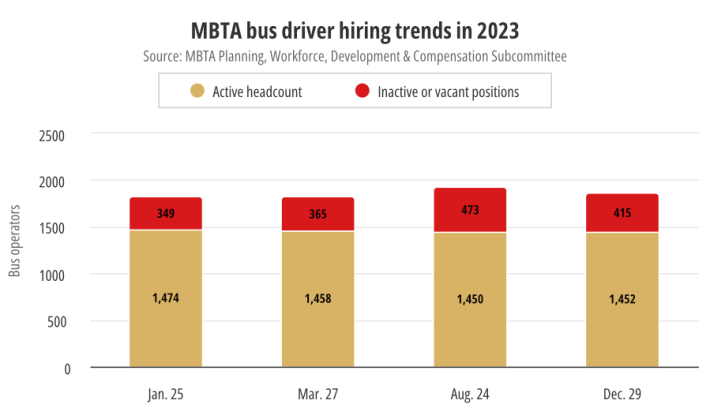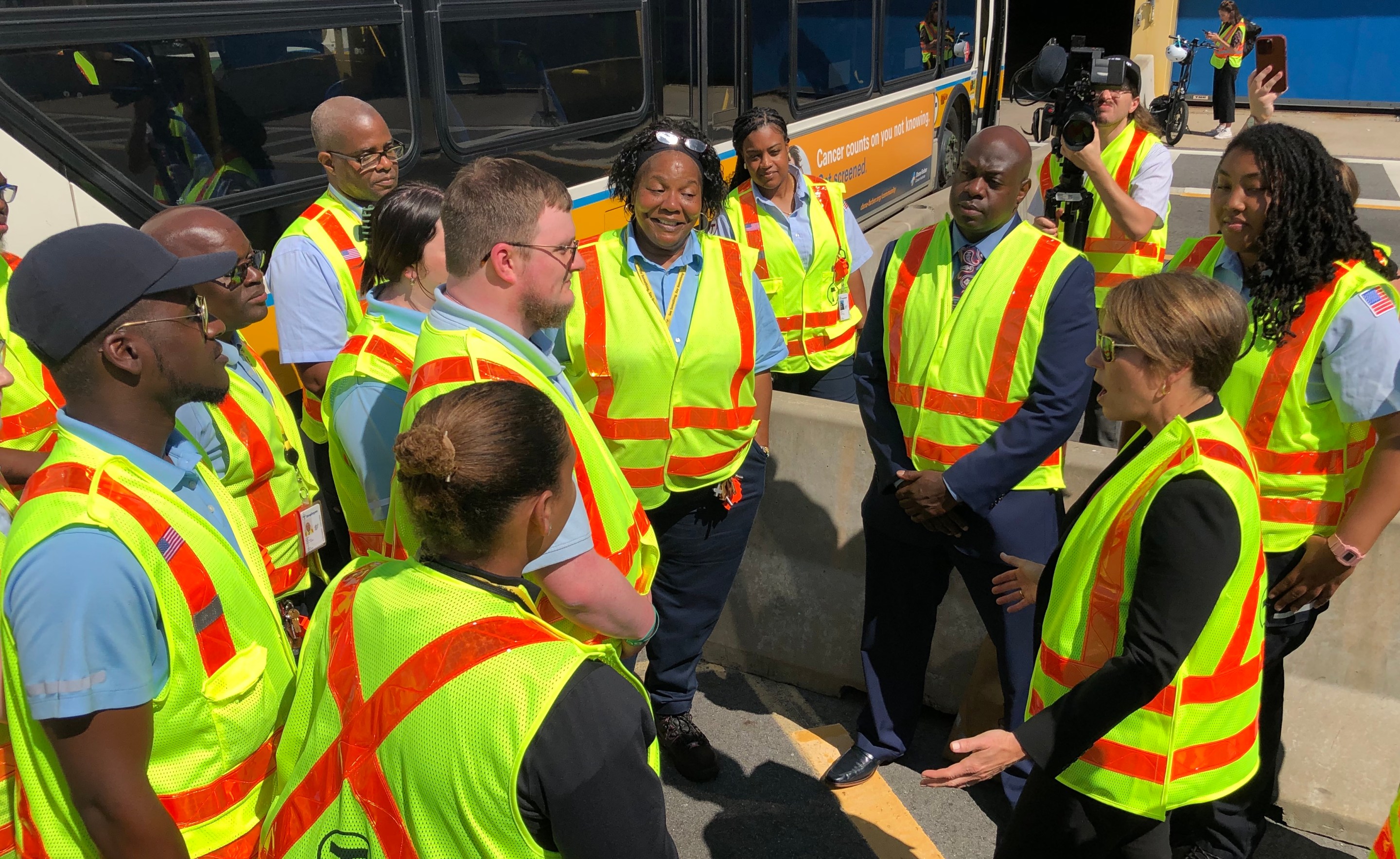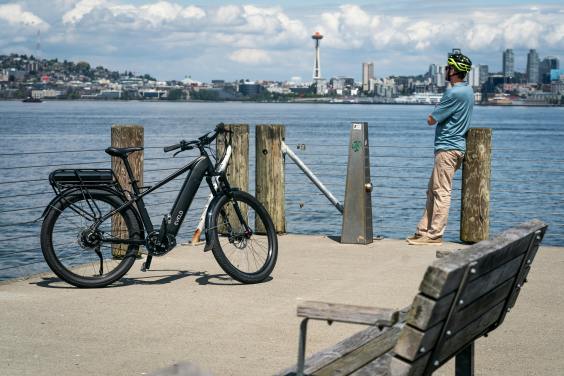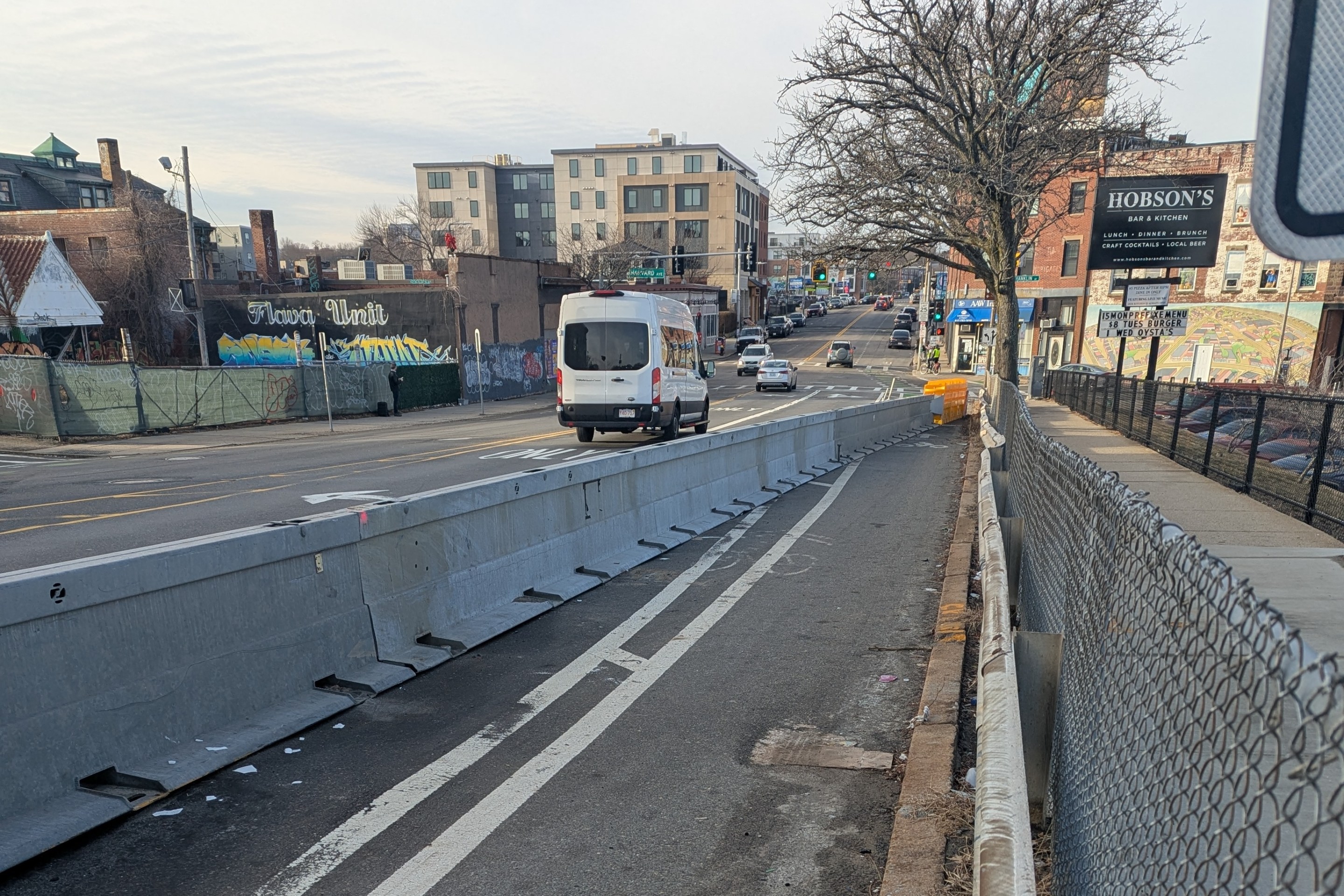Last summer, the Healey administration and MBTA transit workers struck a "historic" labor deal that aimed squarely at turning around the region's shortage of workers to operate and repair the region's transit system.
Improvements to bus driver pay and working schedules were a marquee feature of that new contract: effective July 1, newly-hired bus drivers were getting paid $30 per hour, about $8 more than the previous wage for entry-level drivers.
According to a briefing for the MBTA board of directors earlier this month, those changes helped bring about a 450 percent in new job applications for bus operator positions this summer.
But that surge in job applications hasn't yet produced a surge of new drivers on the streets.
Active headcount increased by just two drivers since August
As Governor Healey boasted during her State of the Commonwealth speech last week, 2023 was "the best year of hiring the T has ever had."
But those efforts are struggling against the headwinds of an aging workforce. 2023 was also a historic year for workers leaving the T: 750 people retired or quit.
Back in August, MBTA spokesperson Joe Pesaturo told StreetsblogMASS that the T had 1,450 active bus operators, 166 inactive operators (employees who were on the payroll but out on family or medical leave), and 307 vacant bus operator positions.

When we followed up for an update on those numbers earlier this month, Pesaturo told StreetsblogMASS that at the end of December 2023, the T had 1,452 active bus operators – a net increase of only two people since August.
More drivers in training
There are, however, some promising signs that the T's bus operator workforce could finally start growing towards a full roster in 2024.
Before the new labor contract took effect, the T typically had 20 to 30 people enrolled in each of its bus operator training courses, which typically last about 12 weeks.
During a presentation on January 11, Ahmad Barnes, the MBTA's Chief Workforce Officer, informed MBTA board members that the T had increased both the class size and the cadence of its bus operator training courses.
The T is now offering classes every 8 weeks, and the most recent January bus operator training class enrolled 90 candidates.






